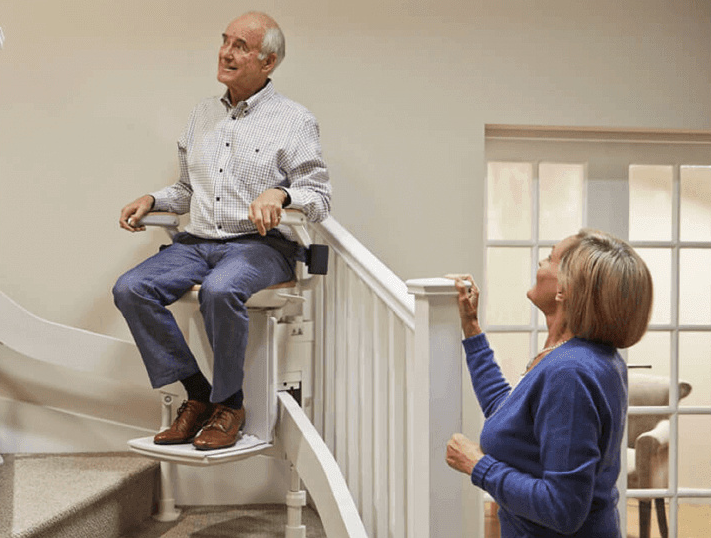
Strides are constantly being made in technology and as a result, more or less every industry imaginable has benefitted somehow – and that includes the care home sector. The list below highlights some of these benefits and explores in depth how they have all, in some way, assisted care home residents with their mobility, wellbeing, and ability to take on tasks everyday…
Video calling services
Skype and FaceTime have become very popular over the past few years. As a result, so many people have access to video calling services today. When it comes to the care home sector, this technology can provide benefits to various parties.
For example, care home residents can keep living independently because of the important lifeline that video calling provides them with. Meanwhile, family members can be kept informed and reassured about their loved ones as they can see people that they care about instead of just listening to them over the phone. Even healthcare workers at hospitals and other medical facilities may be able to use a video call to make a remote diagnosis if a resident isn’t feeling well.
Telemedicine
The benefits that telemedicine can provide to care homes have been showcased by GPs throughout East Lancashire. A form of telecare, the scheme has been piloted in the north-west England region and sees calls carried out by care home staff being routed to a Hub monitored by hospital based-nurses — as opposed to the calls going straight through to a GP. Once answered, one of the nurses working at the Hub will be able to assess the reason for the call and then decide between the following three options:
- Determine that a visit by a doctor to the care home is necessary
- Determine that a visit by a district nurse or another member of the healthcare team to the care home is necessary
- Determine that the care home resident will be better to attend the hospital’s emergency department.
Nurses at the Hub are also on hand to provide advice to care home staff as a result of their skillsets and experience, including whether observations of temperature or blood pressure will need to be carried out.
Robotics
Robots will eventually rise up and take over the world, at least that’s what sci-fi movies have led us to believe. However, the reality at the moment is that robotics can actually aid care home residents in so many ways.
An example of this in practice is with the development of the robot Paro in Japan. It provides therapeutic care to people who are living with dementia. Then there’s Robear, a robot that has been assembled by researchers at Japan’s Meijo University in a manner that enables it to perform specific care tasks — it can help a person to stand or lift them into a bed or a chair, for example.
Researchers at Aalborg University in Denmark are also the brains behind the development of a revolutionary robotic suit. While it’s being especially designed to support those with severe mobility issues that were caused by stroke or arthritis, the suit can also assist elderly people to stand up and move around without the need for any assistance.

Handheld mobile devices installed with appropriate software
As of 2017, professional services firm Deloitte claims that 85 percent of those in the UK either owned or had ready access to a smartphone. 68 percent of Brits also said they personally owned or had ready access to a tablet computer.
Appropriate software can be installed until both of these handheld mobile gadgets so that care home staff can update the care that is been provided to the residents at the establishments where they work. Any information that a care home staff member wants to make about an individual can also be accurately recorded, dismissing the need to use paper notes which can easily get misplaced in transit.
Inputting and updating information related to a resident is only one benefit of using this resource though. This is because the software can be configured so that a user is clearly aware of what a person’s normal routine is. What’s more, some pieces of software allow family members to log on wherever they are and keep up-to-date with their loved one.
Acoustic listening devices
As long as the occupant consents to having the technology installed, acoustic listening devices can be fitted in a care home resident’s room and means that staff won’t be required to patrol rooms and potentially disturb a person’s sleep. Instead, the gadget can be turned on overnight and then staff members can monitor the sounds coming from the room that it’s set up in. Should an unusual noise be picked up, staff can go and check what the cause was.
To achieve similar goals, cameras can also be installed. Again though, consent will need to be gained from the occupant of the bedroom before any equipment is installed.
These five advances were selected and researched by Bonita Springs Stair Lifts. As advances in technology are revealed on an almost day-to-day basis these days, it will be interesting to see what the next big development will be in the care home sector…
Sources:
http://balcombecarehomes.co.uk/2016/07/how-technology-improves-lives-for-uk-care-home-residents/
https://www.scie.org.uk/dementia/support/technology/care-homes

